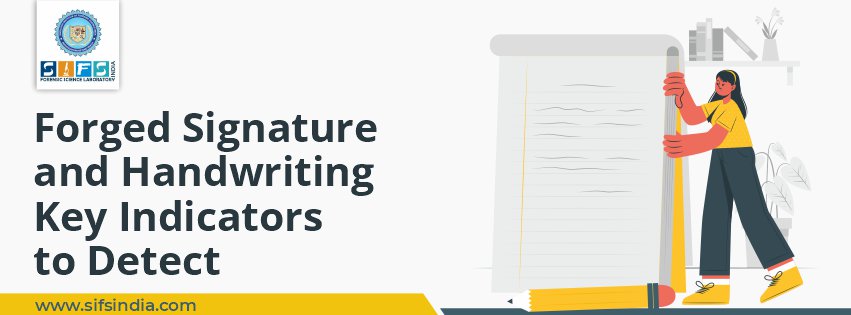In the course of our life, we are all asked to sign a document rather than merely putting an inked fingerprint on the paper as a method of identification.
Why don’t we simply place a thumbprint on a check instead of a signature?
The answer to this riddle lies in the word “intent”. By applying signature on any piece of the document whether it is cheque, agreement, contract, we are simply authenticating it on our behalf.
One could easily place the fingerprint of someone recently deceased or unconscious upon a document, if that was all required for authorization.
A signature is just a modification of one’s personal handwriting accompanied by some artistic and recognizable letter formations.
Signature examinations, done by any forensic expert, lead to one definitive opinion, whether it is genuine or not.
“Forgery” is a legal term and its use must be avoided by the document examiner.
A document examiner cannot declare a signature or document is a forgery. The questioned document examiner may opine whether the signature is genuine or not.
Forgery is for the trier of fact to determine and implies intent to deceive.
Since forgery is a lawful term, so without having a licensed attorney, the questioned document examiner can’t predict the main motive of the forger who wrote the signature of another person.
The document examiner can be competent by the court of law as an expert witness to state, “the person whose signature is allegedly on the questioned document did not write the signature.”
If the document examiner is asked during cross-examination whether this is a forged signature, the proper answer given by him is, “I do not know.”
Document examiners are generally asked to examine abbreviated signatures in question.
Most frequently it is observed that people sign their name to simplify their signature.
However, reducing the intricacy of the signature increases the probability of getting it forged easily.
A complex, fluently written signature reduces the chances for an effective “forgery” of the name.
Different indicators of forgery are, blunt starts and stops, pen lifts and hesitation, tremors, speed and pressure, patching, etc.
At times all these features are displayed in genuine signatures too, like aged or physically weak writers.
By mere presence of such features doesn’t conclude that the signature under scrutiny is not genuine and vice-versa.
Often, a forger, because of inherent high skills in his writing, may produce a product with fewer indications of forgery than a counterpart with lower skills.
Nowadays cases are received to compare a simulated or traced signature with handwriting samples of the purported ‘forger’.
It is generally expected that the suspected writer is responsible for the forgery but the reality is that a well-simulated signature, or copying, hardly contains pinpointing features of the writer.
In the writer’s attempt to successfully replicate another persons’ signature, they attempt to abandon their own handwriting profile.
However, rushed or poorly executed simulations may give some clues about the writer, if they unintentionally embrace their individual natural writing features.
Tracings rarely would offer that opportunity. Prolonged writing, such as anonymous notes, offers a greater likelihood of the writer including their own writing traits.
Rarely, the initials of a person are called into question.
Initials intrinsically have more restrictions than signatures when a document examiner tries to ascertain or eradicate a person as the writer.
Unlike signatures, initials are usually restricted to two or three letters. They may be either written in a simple printed style or have some uniqueness when written in a cursive manner.
The procurement of initial specimen samples, which is known to be written by the supposed writer may be hard to obtain for the evaluation process.
Because of the limitations mentioned, it wouldn't be surprising for a qualified document examiner to render an unqualified opinion a suspect writer did, or did not, write initials in question.
At best, an experienced opinion is classically provided such as, “There are signs the initials in question are unpretentious.”

 February 28, 2021 - BY SIFS India
February 28, 2021 - BY SIFS India